3p and HP Hosted #LivingProgress Twitter Chat LIVE from SXSW Eco


On October 7th, TriplePundit and HP hosted a live Twitter Chat from #SXSWeco, at the hashtag #livingprogress.
During this year's SXSWEco conference, Nick Aster, Founder and Publisher of Triple Pundit, and Chris Librie, Senior Director of Strategy and Communications at HP Corporate Affairs, came together at the HP Living Progress Exchange to bring the dialogue to you via Twitter!
The conversation covered some of the big challenges facing us today, including a rapidly growing population, effects of climate change, economic instability and global health crises.
Since challenges present opportunities for forward-thinking individuals and companies, HP is using the Living Progress framework for thinking about how it does business to create a better future for everyone through its actions and innovations. Through HP Living Progress, HP brings together people and technology to solve the world’s toughest challenges.
TriplePundit led the dialogue while HP provided facts and highlights of its past, present, and future work in sustainability. Topics covered in the discussion on HP's Living Progress plan included the goals and successes of its supply chain, operations, collaborations, and more.
A few breakthroughs in HP's innovations include:
- HP has developed a liquid-cooled supercomputer which can help companies eliminate up to 3,800 tons of CO2 waste from data centers per year.
- HP has a goal to reduce the emissions intensity of our product portfolio, 40% by 2020 compared to 2010.
- HP is the only global IT company to set carbon reduction goals for all 3 parts of its value chain - across operations, supply chain and its product portfolio.
- One Living Progress example is HP's Africa take-back & recycling program that creates jobs and a healthier environment.
- HP's eHealth Center initiative provides quality care in rural underserved areas.
Missed the chat or want to learn more? Here's the Storify summary:
Targeted Marketing and Online Privacy

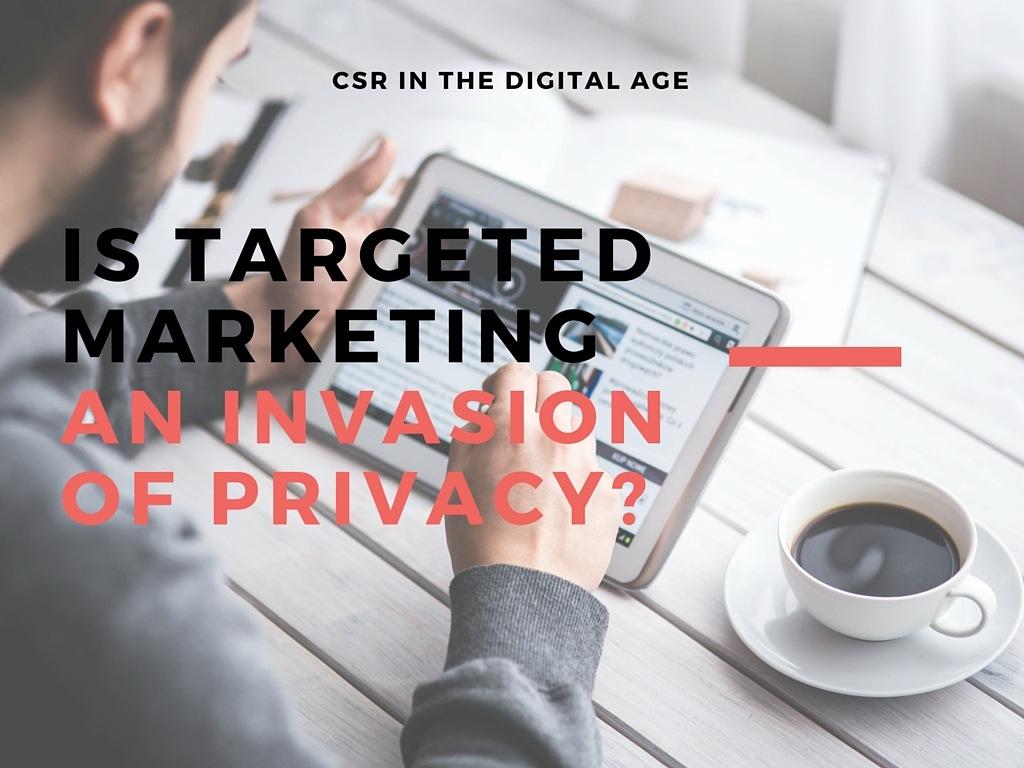
Have you noticed that lately, the moment a notion or product pops into your head, you suddenly start seeing ads related to it in the margins of your web browser? Okay, you probably weren’t just thinking about it, maybe you did a web search or mentioned it in an email, but it is still eerie.
Companies now have the ability to look at your browsing history and other online activities and mine that data for clues about you and your purchasing habits. In turn, they use their intel to serve you targeted ads. Facebook is notorious for serving ads about pregnancy and baby equipment to the newly married, for example.
Some people appreciate these directed ads, figuring that if they are going to see advertising, they might as well get ads for relevant products. Others are annoyed and find it mildly creepy, while a third group are outraged at what they feel is an invasion of their privacy. In fact, 73 percent of consumers surveyed said that they object to being tracked online. It is often said that if you get a something for free (à la Google or Facebook), you aren't the customer, you're the product. The question is -- for those companies in the business of selling data, what are the CSR implications of doing so?
Privacy is a form of security -- we trust that private data will remain secure from prying eyes. If private date is exposed without the owner's consent, that's a form of theft even if it is only used to produce targeted marketing.
In order to target marketing effectively, advertisers must track where computer users go and what they do online. In today’s world, that feat is often accomplished by cookies -- tiny files that are saved in your computer linking it with a remote website. When you return to a website you’ve been to before, the site’s software searches for the cookie on your computer, and when it finds it, it then knows who you are. They can then link that information with their own records of your previous transactions, as well as any other information they might have collected about you from databases, or third-party providers.
This can also be useful. If you have purchased items through this website, it could be helpful to be able to look at your past purchases, perhaps to order more of the same, or if you have decided to return the item. Most people don’t mind this so much, but it’s when those ads start popping up that people feel that a line has been crossed.
Companies, or as advertisers call them, brands, have been gathering information for a long time to specifically tailor their messages to consumers. In the past, information like your age, your location, and your field of work were used to place you in a cohort, from which some general tendencies of your buying behavior might be inferred.
Of course the Internet provides a far richer data set for these purposes. For detailed information on who is collecting what from your online activities, you could visit any of the following websites.
- AccessMyLibrary reveals what information companies collect from your purchasing habits.
- The Federal Trade Commission provides instructions on how to opt-out of different forms of direct marketing.
- The Direct Marketing Association is the industry group’s representative, extolling the benefits of direct marketing.
What recourse is there for those who don’t welcome this kind of intrusion? There are ad-blocker programs that can prevent pop-up ads from filling your screen. Many browsers have these built-in. A user can also disable cookies in their browser settings. But this disables the useful tracking functions along with the annoying ones.
Consumers fight back
This disenchantment with ads, particularly those that attach themselves to social media, helps to explain the sudden surge of interest in Ello. The site works by invitation only and the stated mission, according to CEO Paul Budnitz, is to be profitable without selling user data.
The European Union recently proposed changes to their data protection laws that would give individuals more rights and more control over who gets to see what in their data and what can be done with what is seen. Among these reforms would be “the right to be forgotten.” Staunchest opponents want tough laws restricting, “any form of automated processing of personal data intended to evaluate certain personal aspects relating to a natural person or to analyze or predict in particular that natural person’s... personal preferences, reliability or behavior.”
Targeted marketing and corporate sustainability
Absent legislation, companies will likely continue to sell data -- it's a lucrative way to boost the bottom line. Is it a Corporate Social Responsibility (CSR) issue? Given that CSR starts with materiality, and materiality is determined by stakeholders, and stakeholders include those people who interact with your product, be they customers or products, we at TriplePundit give a resounding "yes." Customer privacy vis a vis targeted marketing is a key sustainability issue for companies that engage in it. We haven't seen it pop up in these company's sustainability reports, but we believe it should be there. Customers clearly care, given the number of initiatives that are popping up to help individuals take back control of their data.
One example is Network Advertising Initiative’s (NAI) Opt-Out tool. Visiting this website will bring up a list of all the companies that are currently using cookies to provide targeted advertising to your computer. When I visited I received 83 names, the vast majority of which I had never heard of. Eliminating these will not stop ads from coming, but they will no longer be targeted based on my online activities. Other browser tools include privacychoice, which makes TrackerBlock and TrackerScan, and PrivacyCheck, which is specific to Facebook. Another option for Chrome users is to use Google in Incognito mode, which can be toggled and off. This mode deletes browsing history, cookies, and extensions, which should eliminate most tracking.
Whether it will be better or worse remains to be seen. Says Marc Groman, President & CEO of Network Advertising Initiative (NAI), a successful solution must, “bake in privacy by design and ensure that there is transparency, notice, control, choice and accountability.”
For companies, who are more concerned than ever about protecting their online reputations, this can be a challenging business. Given the variation in individual preferences, the need for agility, and the tools to offer the flexibility and responsiveness that today’s customers demand. Companies like TRUSTe now offer integrated Data Privacy Management Platforms to help address these issues. Companies that care about sustainability would be wise to consider them.
Image credit: Sagie: Flickr Creative Commons; Pixabay
Designed Right, Carbon Taxes Do Not Kill Jobs
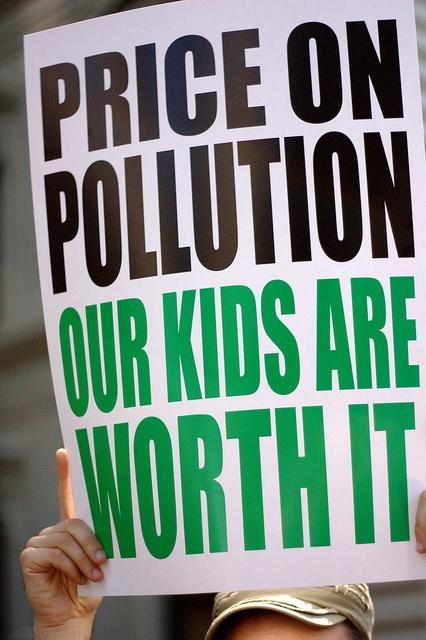

The standard argument from opponents in the continuing debate over carbon taxes is the grudging admission that while they might reduce carbon emissions, the taxes ultimately fail because they kill jobs.
A recent Bloomberg editorial goes a long way to dispelling the latter part of that argument. Where they are implemented, carbon taxes—also known as environmental tax reforms (ETR)—succeed in reducing greenhouse-gas emissions. “The next question is whether that success is bought at the expense of jobs and incomes,” Bloomberg says. “The answer is no. As long as the tax is well-designed, it can cut emissions at little or no economic cost. And that is a conservative assessment: In practice, a carbon tax has been shown to provide an economic boost. The reason is that the revenue raised by a carbon tax can be used to cut other, more damaging, taxes.”
That’s because, generally speaking, taxes make economies less efficient. But there are degrees of damage, as the editorial explains: “Taxing ‘bads,’ such as pollution, actually improves the allocation of resources, whereas taxing ‘goods,’ such as labor, reduces the economy's capacity to produce. In principle, therefore, using the revenue from a carbon tax to cut other taxes can yield a double benefit: reducing pollution and expanding the economy.”
Reducing pollution
A recent report from the Institute for European Environmental Policy (IEEP) says in terms of environmental impacts, past experience has shown “substantial variations” among countries, but carbon and energy taxes carbon and energy taxes have led to substantial CO2 savings in some countries. “In Denmark for example, total CO2 emissions decreased by 24 percent between 1990 and 2001, with Danish industry reducing its CO2 emissions by 25 percent per produced unit from 1993 to 2000,” the report said. “In Sweden, average 2008-11 emissions were 12.6 percent lower than 1990 levels, while in Finland energy and carbon taxes were found to have reduced carbon emissions by over seven percent in 1990-1998.”
Despite these positive trends, the report continued, the “overall rate of emission reductions is however insufficient to meet medium and long-term GHG emission reductions targets and to achieve full decoupling of economic growth from GHG emissions.” The limited effectiveness of the taxes is often linked to the numerous exemptions and tax reductions provided to sectors with the greatest potential to achieve emission reductions, so that’s a problem. For example, in Germany, such so-called “derogations” for the manufacturing and energy-intensive industry lowered the overall potential positive environmental impact of the ETR, “although modifications to these derogations in 2003 have been found to increase CO2 emission reductions compared to previous calculations.”
GDP and Jobs
The IEEP report notes there is increasing evidence and analysis that suggests ETR “has had and can on the whole have positive effects on GDP growth, although there are also cases of negative effects and changes over time.” In Finland for example, ETR lead to an average increase in GDP of around 0.5 per cent in 2012, “with the main reason being that the taxes fall almost exclusively on imports of energy products, thus when energy demand falls there is an improvement in the international trade balance.”
The economic impacts of a particular carbon or energy tax reform depend on design (where taxes are levied), where the burden falls (on important domestic activities), the timescale, and on the use of revenues (investing in energy efficiency improvements in affected industries).
Experiences “also generally show a positive impact on employment overall,” the IEEP report said, although this depends on whether and how revenues are recycled as well as the nature of the wider ETR, including the other taxes or charges that are reduced (labor taxes). Also where the tax is applied “will determine where job losses may take place, as there may be losses for specific companies in a given sector but positive impacts for the economy as a whole.”
So it’s complicated, as they say. But overall, IEEP’s review of nine countries found none where a carbon tax had led to job losses.
Bloomberg said proceeding with caution is warranted, however: First, the economic benefits of a carbon tax “can take time to come through.” Second, while the economy as a whole may benefit from a carbon tax, that won't be true of every business or industry—energy-intensive sectors will be hit.
But the bottom line is that carbon taxes can help the environment and the economy if, as Bloomberg notes, the revenue is put to good use. The real trick, then is how to design a carbon tax.
Image: our kids are worth it by Louisa Billeter via Flickr cc
California Governor Vetoes Antibiotic Resistance Bill, Critics Cheer

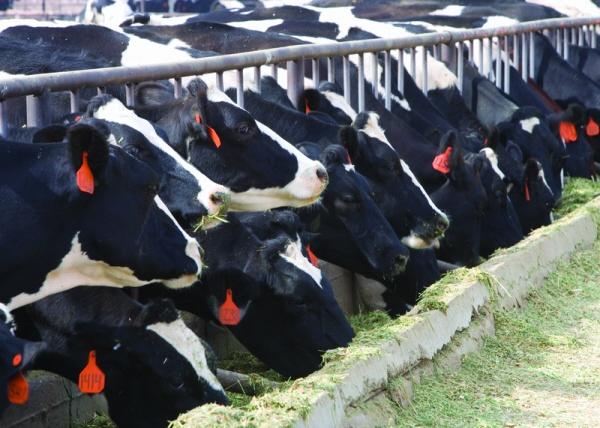
Responding to pressure from environmental groups, last week California Gov. Jerry Brown vetoed a controversial bill that was designed, on the surface, to regulate antibiotic use in livestock.
In a short statement released Sept. 29, Brown stated that the bill did little more than “codify a Federal Drug Administration standard [Guidance 213, or GFI 213] that phases out antibiotic use for growth promotion.” Reinforcing the standard was necessary, said Brown, “because most major animal producers have already pledged to go beyond [it]."
Instead, he is assembling a task force to find "new and effective ways" to reduce antibiotic use in animal stocks.
But what the state standard would have done is as interesting as what it wouldn’t have accomplished.
First, its failings: As the Brown administration pointed out, the state standard wouldn’t have done anything to appreciably change the status quo when it came to antibiotic use in animals. As Jonathan Kaplan, director of the Natural Resources Defense Council’s food and agriculture program, pointed out: SB 835 would have “condoned the routine use of many of the same drugs for prophylactic disease prevention – even as a substitute for better animal living conditions and good husbandry practices.” And just as important, Kaplan noted, it “would not have required a net reduction of antibiotic use.”
So, while California’s SB 835 would have made it harder for drugs to be used in growth promotion, it would still have condoned the use of drugs for prophylactic (preventative) use.
To understand why environmental and health groups have been sounding the alarm on this issue, consider that it is prophylactic use of antibiotics that has been at the heart of issues surrounding the Foster Farms drug-resistant salmonella Heidelberg infections. It’s also a practice that environmental groups like the NRDC asked Foster Farms, at the height of those infections, to stop using.
According to the San Francisco Chronicle, Foster Farms Vice President of Technical Services Robert O’Connor has acknowledged that the company uses antibiotics for prophylactic reasons. President and CEO Ron Foster maintains that it’s necessary for the health of the birds. The admission has intensified the debate around whether regular administration of antibiotics in animals increases antibiotic resistance, as has been already shown to be true in humans. While preventative use of antibiotics has not been blamed as the cause for the Foster Farms Heidelberg outbreak, critics of this practice have been calling for more regulation of prophylactic use of antibiotics. SB 835, however, would not have addressed this issue.
Now, for what SB 835 would have done: Federal GFI 209, and its follow-up, GFI 213, both have an interesting codicil that is often too lightly considered: They are non-binding. Neither has the force of law to ensure that meat producers don’t administer growth-inducing antibiotics; they simply provide counsel to livestock owners, drug producers and veterinarians. But they don’t enforce any of the oversight that environmentalists, health advocates or animal rights groups have been calling for. GFI 209 offers steps and voluntary measures to limit the use of antimicrobial drugs to “judicious use.” GFI follows this up with further gentle guidance on administering therapeutic drugs to livestock, and includes a bold reminder that the FDA guidance for information publications “do not establish legally enforceable responsibilities [but] should be viewed only as recommendations.”
SB 835 would have codified non-enforceable standards that are still very much in discussion and are considered to have their own shortcomings. While SB 835 might have provided more teeth for ensuring that growth-promoting drugs were phased out in the country’s fourth-largest beef-producing state, I wonder what the impact would have been on the ongoing effort to regulate those practices it did condone. Precedents become difficult stones to overturn, especially when they are put into law. And that may be one of the reasons that the FDA it seems reticent to enforce a pressing but controversial issue like antibiotic use in our food.
Sen. Jerry Hill (D), who worked tirelessly to promote SB 835, noted that removing all antibiotics from animal care removes a tool that may be vital to fighting disease and in the end could result in unnecessary suffering for the animal. It’s a valid point that led to the creation of antibiotics in the first place. Before such resources, humans and animals suffered needless amputations or deaths. Remedies for fairly minor infections called for long, often painful treatments. In the end, the patient was often at risk of dying from treatment instead of the disease.
But the issue of antibiotic overuse also has a troubling history: Antibiotic resistance goes back almost as long as the creation of penicillin and sulfa. Resistance was rampant at in hospitals the mid-1900s, and was later curbed by changes in how drugs were administered. Less than a century later, we’re still dealing with the aftermath.
“[Antibiotic] resistance is a multifaceted problem,” says Hill, who acknowledges that more work needs to be done to address the use of antimicrobial drugs in livestock. And, as NRDC has pointed out, getting to the root of when such medications are needed requires first addressing the way livestock are raised and cared for. It’s a valid point that some smaller organic and free-range livestock producers have already championed. Consumer health risks aren’t always determined by how we treat the livestock we raise for food, but it’s certainly a good point to at which to start.
Image credit: USDA NRCS
Are B Corps Relevant Outside of the U.S.?
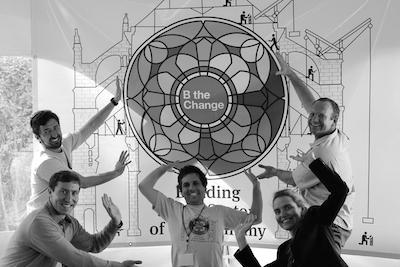

This is the ninth in a weekly series of excerpts from the upcoming book The B Corp Handbook: How to Use Business as a Force for Good (Berrett-Koehler Publishers, October 13, 2014). Click here to read the rest of the series.
The B Corp movement has amplified the voice of a global community of entrepreneurs, investors, and consumers behind the power of a unifying brand that stands for a better way to do business.
Since B Lab (the nonprofit behind the B Corporation) was founded in 2007, the B Corp movement has become increasingly attractive and exciting to entrepreneurs outside of the United States.
For example, more than 1,100 Certified B Corps from 120 industries and 35 countries (including Afghanistan, Australia, Brazil, Germany, Kenya, and Mongolia) can now speak with one voice when they invite their millions of friends, family, and colleagues to join them in using business as a force for good.
This platform enables the B Corp community to build a collective voice that transcends international boundaries, helps galvanize more people, and creates a positive effect on society and the environment that is more powerful than any individual company.
B Corp certification helps raise awareness around what is being done well in Afghanistan. It sets an example that an Afghan company can achieve international standards for ethical operations and transparency. It also benefits other Afghan companies by opening up more mentoring opportunities and demonstrating the path to apply for B Corp certification. --Luisa Walmsley, CSR Program Manager, Roshan (Afghanistan)
Whether you are a sole proprietor, a national brand, or global business with billions in sales, and whether your focus is on strengthening local communities, reducing global poverty, or addressing climate change, being part of a larger movement can help build collective voice, accelerate the adoption of standards, drive capital, pass supportive public policies, and inspire consumers to change their behavior.
B Lab has partnered with several organizations to help drive the movement globally. At the 2012 Clinton Global Initiative, for example, B Lab formally launched a partnership with Sistema B to serve and support the community of Certified B Corporations (Empresas B) in South America. The initial focus of this partnership will be on developing a community of Empresas B in Argentina, Brazil, Chile, and Colombia. As a sign of the rising popularity of the movement, the Certified B Corporation was named the number one idea on a list of one hundred ideas that could change the world, compiled by Semana Sostenible, a popular magazine based in Colombia.
People keep saying, “Oh, you are a B Corp? That’s amazing! How do you do it?” This happens at least twice a week. --Sebastian Salinas Claro, CEO, Emprediem (Chile)
Other exciting partnerships include the recent launches of B Corp Europe and B Corp Australia, and B Lab’s collaboration with MaRS Discovery District to support the B Corp community in Canada. In fact, the total number of Canadian B Corps grew by 65 percent in 2013.
Indeed, during interviews conducted for this book, representatives of Certified B Corps from all over the world—Argentina, Brazil, Colombia, Costa Rica, Guatemala, Italy, Mexico, and Turkey, as well as Canada and the United States—repeatedly described participation in a global movement to redefine success in business as an incredibly invigorating and profound experience.
For Net Balance, becoming a B Corporation was simply an extension of our vision and values. We believe that, for business to succeed into the future, it must be led by purpose as much as profit. --Terence Jeyaretnam, Executive Director, Net Balance (Australia)Ryan Honeyman is a sustainability consultant, executive coach, keynote speaker, and author of The B Corp Handbook: How to Use Business as a Force for Good. Ryan helps businesses save money, improve employee satisfaction, and increase brand value by helping them maximize the value of their sustainability efforts, including helping companies certify and thrive as B Corps. His clients include Ben & Jerry’s, Klean Kanteen, Nutiva, McEvoy Ranch, Opticos Design, CleanWell, Exygy, and the Filene Research Institute.
To get exclusive updates and free resources about the B Corp movement, sign up for Ryan’s monthly newsletter. You can also visit honeymanconsulting.com or follow Ryan on Twitter:@honeymanconsult.
Solar PV Catching On Fast in Latin America, Caribbean
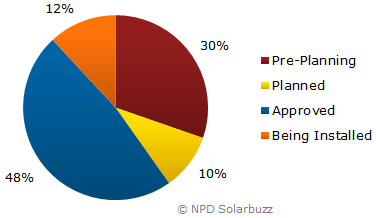

Countries across the Latin America and Caribbean (LAC) region are making increasing use of renewable energy resources to spur sustainable development. Use of solar photovoltaic (PV) technology, for instance, “is poised to play a substantial role in fulfilling the need for increased power generation capacity” throughout the LAC region, according to an NPD Solarbuzz market research report released September 29.
A gigawatt (GW) of PV projects are under construction across the LAC region at present. That's just the tip of the iceberg, however, according to NPD Solarbuzz's “Emerging PV Markets Report: Latin America and the Caribbean.”
The PV project pipeline across the LAC region now exceeds 22 GWs across all phases of development, NPD Solarbuzz highlights in its report. Some 9 GWs of PV capacity will be installed over the next five years, with 5 GWs already approved and primed to move ahead into the construction phase.
Shifting PV market dyanmics
The nature of the PV market in the LAC is changing, NPD Solarbuzz report authors note. Whereas PV projects in previous years have largely been small-scale and off-grid, governments across the region are restructuring legislative and regulatory schemes by instituting policies and programs that promote utility-scale, as well as larger commercial, industrial and rural, PV electrification projects.
Greater government support for large-scale PV project development is especially notable in the LAC region's largest economies – Brazil, Chile and Mexico. “Many of these projects,” the report authors add, “are being developed by experienced international firms, including leading U.S.-based companies First Solar, SunPower and SunEdison, and European developers Mainstream, Enel, and Solaria, which is increasing the likelihood that these projects will ultimately be executed.”
“Solar PV is now starting to emerge as a preferred energy technology for Latin American and Caribbean countries,” NPD Solarbuzz Senior Analyst Michael Barker was quoted in a news release. “The region has high electricity prices and it also benefits from strong solar irradiation, which makes it a good candidate for solar PV deployment. As a result, experienced global solar PV developers are seeing strong solar PV growth potential in the region.”
Leading solar PV adoption in the Latin America-Caribbean region
“Many countries across the LAC region have the potential to develop into major solar PV markets in the future,” Barker added. “While project pipelines vary by country, there is a strong contribution from early-stage developments that have yet to finalize supply deals or find end-users to purchase the generated electricity, which presents both risks and opportunities for industry players.”
The promise of stable, lower cost clean and renewable power supplies is particularly attractive in the Caribbean region, where heavy reliance on oil and natural gas for power generation takes a heavy economic, as well as environmental, toll. Though Caribbean nation government leaders have been making statements pledging to promote and foster a transition to clean, distributed renewable energy sources, actual installations of residential and commercial PV continues to lag behind expectations.
In Mexico, mainstream news media has focused on President Enrique Pena Nieto's historic energy reform bill to unleash a flood of investment from multinational oil and gas companies. Nieto's energy reform bill opens up oil and gas exploration and production and refining to foreign firms for the first time since Mexico nationalized its oil reserves and industry in 1938.
Much less reported on, Mexico's energy sector reform is also expected to bring a lot more in the way of renewable energy resource investment and project development. Mexico's El Economista recently reported that Mexico has 40 GW of wind energy resource potential. Our southern neighbor, El Economista continues, is poised to become one of the fastest growing wind energy producers in the world. More than 1.3 GWs of wind power was installed in Mexico in 2012. Market analysts forecast that more than $20 billion in wind energy investments will be made in Mexico over the next decade.
Chile has emerged as another regional LAC renewable energy leader, particularly when it comes to promoting large, utility-scale projects. In September Chile's Environmental Assessment Service approved the South Campos PV project. Some $1.6 billion is to be invested in bringing the massive, 698-megawatt solar power facility online. South Campus PV facility is being built in Chile's northern Atacama region, which is home to some of Chile's largest mining operations. The driest desert in the world, the Atacama also has one of the highest solar irradiation rates on earth.
*Image credits: NPD Solarbuzz
GreenChar Increases Access to Clean Cookstoves in Kenya


Approximately 84 percent of all households in Kenya use solid fuels for cooking. This rate spikes to 95 percent for Kenyans who live in rural households. So as they have for generations, most families in Kenya use cookstoves three times a day to prepare their meals. But the results are negative all around: deforestation, increased carbon emissions and a massive threat to public health. The Alliance for Clean Cookstoves estimates over 36 million Kenyans are affected by household air pollution (HAP); over 15,000 deaths in Kenya annually are directly related to HAP. One social enterprise, GreenChar, is trying to reverse that trend.
GreenChar is trying to take a different approach from other cookstove initiatives that have launched, and failed, in Kenya, Africa, and in other developing regions such as India. As an article in Nature earlier this year outlined, the fact that one-third of the world’s population uses solid fuel to cook food takes a toll on our environment, on families and on their communities. But despite the best intentions, scores of cookstove projects have failed, for a bevy of economic and cultural reasons. An 18-year-old social entreprenuer who recently graduated from high school, however, hopes to buck this discouraging trend.
Tom Osborn grew up in Awendo, western Kenya, not far from the border with Tanzania. He and his younger spent much of their time gathering firewood and charcoal to help their mother with her daily cooking routine; Tom’s task was to light the cookstove daily. Tired of watching the effects the cookstove had on his mother’s health, and curious about innovations that would allow them to cook safely and cleanly, he started building prototypes and explored fuel alternatives to wood. He eventually submitted his idea for a cleaner cookstove in an entrepreneurship competition, and his US$3,000 Anzisha Prize helped him launch GreenChar, which he co-founded with Ian Oluoch.
Joining them is Yina Sun, a former pre-med student who became disenchanted with her career path, became interested in cookstoves from a public health perspective, and is now the Chief Operating Officer of GreenChar. For Sun, the fact that smoke inhalation is the world’s fourth greatest health risk after high blood pressure, tobacco and alcohol was her motivation to join GreenChar.
GreenChar’s business model has two important components. First, the company manufactures charcoal briquettes out of agricultural waste. GreenChar also distributes clean cookstoves that maximize the efficiency of the briquettes. According to Osborn, critical to the company’s success is the expansion of women’s clubs that have several purposes: to collect payments for the cookstoves (at $25 to $40 paying for them up front is out of most Kenyan's budgets); offer tips on how to use the cookstoves efficiently and correctly; and also train them how to make their own briquettes. The company's ideas are not necessarily radical, Sun explained; rather, the fact GreenChar's products are closer to traditional cooking equipment and fuel should help build trust among the company's potential customers.
It is this community-based approach where Osborn, GreenChar’s, Oluoch, Sun and the rest of the company’s team hopes the company finds traction. During my conversation with Osborn and Sun yesterday, she reminded me that many cookstove programs fail not only because of faulty equipment, but often because locals want to use the same technology to which they are accustomed. Furthermore, Kenyans are more open to purchasing a stove from a local company such as GreenChar, instead of a firm based abroad. After a few months, the company is gaining traction; 4,300 kilograms of clean burning charcoal briquettes and 400 cookstoves have saved over 100 trees and had an impact on over 6,000 lives.
A crowdfunding campaign on Indiegogo is underway as part of GreenChar’s goals to expand, but Osborn, Oluoch and Sun have been aggressive scoring additional funds. Osborn won a huge boost with his recent Echoing Green Fellowship, and in fact he is the youngest recipient ever within this program. GreenChar has received boosts from other grants this year as well. The challenges this group faces are numerous, but its growth is nonetheless impressive. In less than a year, what was once a high school science project has taken off, and could inspire more ideas to help make a daily task, with which billions struggle daily, safer and less of a threat to their health.
After a year in the Middle East and Latin America, Leon Kaye is based in California again. Follow him on Instagram and Twitter. Other thoughts of his are on his site, greengopost.com.
Remembering Rwanda by Celebrating Its Success


Do you need another reminder of what happened 20 years ago in that little hilly nation at the heart of Africa? Every major media outlet already reported this news earlier this year. You read, watched, you remembered. Then you moved on. Just like Rwanda, right? But Rwanda is still remembering. Yes, to grieve the tragedy of those 100 days, but it is more than that.
“Kwibuka” is the Kinyarwanda term for the annual commemoration of the 1994 genocide. For more than four months, the signs hung from nearly every major building on every block of every town in the country. The Flame of Remembrance, the symbol of Kwibuka, traveled to each district across the country. Kwibuka is about remembering the 1994 genocide so that it never happens again. Yet today, it is just as much about celebrating one of the world’s greatest success stories.
We like to use statistics to evaluate progress in economies or examples of social advancement. Rwanda has those: Greater than 8 percent annual GDP growth over recent years. A 65 percent women-run government. The percentage of people living below the poverty line has dropped from nearly 60 percent to less than 45 percent between 2001 and 2013, with the share of people living in extreme poverty falling faster. Measurements of life expectancy, literacy, primary school enrollment and health care spending have all improved dramatically over the past several years.
Impressive as these numbers appear, they still do not begin to capture the immeasurable distance this country has traveled in just two decades. Only the most miraculous of stories can possibly do that.
Over the next several weeks, I will attempt to reveal a series of stories (featured here) intended to offer a more complete perspective and greater appreciation for the incredible triumphs of this Land of a Thousand Hills.
Image credit: Kwibuka.rw
P&G, DuPont Partner on Cellulosic Ethanol Production for Tide Detergent


With all the fuss over corn ethanol, cellulosic ethanol and other potential replacements for gasoline the past several years, it is easy to forget that ethanol is an important component in detergents. An effective, if not the most environmentally friendly surfactant, ethanol helps keep those fabrics clean. For years, corn-based ethanol was an important ingredient in Procter & Gamble’s Tide detergent product line. But that is changing as P&G, in a joint announcement with DuPont, have announced a shift towards cellulosic ethanol that has been 10 years in the making.
This is an interesting development for those of us who have observed the ethanol industry the past several years. In part, the debate over fuel vs. food has kept us captivated, and then of course there have been the endless media advisories from startup companies promising a massive ethanol breakthrough “in six months!” Scores of six months’ later, the reach and scale of P&G and DuPont’s partnership could help cellulosic ethanol become more important in our country’s energy, and chemical, portfolios.
DuPont will produce the ethanol at the company’s biorefinery in Nevada, Iowa, about 40 miles north of Des Moines. The goal is to have 30 million gallons of ethanol processed annually, sourced from agricultural waste such as corn stover, the leaves and stalks that remain after corn is harvested. DuPont claims the refinery will emit zero carbon emissions. In turn, the resulting ethanol that will be an ingredient in Tide Cold Water detergent is a step for P&G in cleaning and greening its supply chain. In a curious nugget of information, both companies claim the resulting power saved is the equivalent of what is needed to do all the clothes washing in California for a month (how this figure was derived was not disclosed by either company).
Is this an altruistic or strategic move? Much of the reason a large firm such as P&G would make this change lies in marketing. The big consumer packaged goods (CPG) companies are facing the reality that consumers want products that are more environmentally responsible: provided, of course, there is no decrease in product quality or performance. Cleaning products companies such as Method have ridden this consumer attitude to financial success as their products take up ample shelf space at retailers including Target. Now the giants in the cleaning products industry, including Unilever and P&G, see they have opportunities in taking a similar approach towards their products.
For example, P&G has taken steps to ensure their products are more sustainable. Earlier this year the company announced phosphates will be removed from all of its detergents sold worldwide, and more of its factories are now zero-waste. This change is not just affecting cleaning products—P&G has also promised to join the sustainable palm oil bandwagon and will clean up its paper and pulp products, using only certified or recycled materials.
Whether this change in sourcing succeeds depends much on consumer behavior. After all, all this cellulosic ethanol is going into a “cold water” detergent P&G pitches as an alternative to using more energy-intensive, and unnecessary, hot water for clothes washing. Nonetheless it is interesting to see two large mainstream companies work together and take an additional step in ensuring their products are more environmentally sustainable while they adapt to changing consumer demands.
Image credit: P&G
After a year in the Middle East and Latin America, Leon Kaye is based in California again. Follow him on Instagram and Twitter. Other thoughts of his are on his site, greengopost.com.
Kenyan Campaign Delivers Clean Water to Thousands in Need


I am in Kenya this week following the activities of Vestergaard, a rather remarkable mission-driven company that first came to my attention when they invited me to Africa -- at their expense -- to tour their operation. They operate at the intersection of water, climate change, and public health.
Vestergaard's LifeStraw water filters are popular with backpackers and hikers and are therefore their most well-known product in the U.S. and Europe. However, Vestergaard also distributes LifeStraw products abroad and makes treated bed nets for malaria prevention. Most of the company's emphasis, and their passion, lies in serving the developing world. In fact, their mission explicitly states that everything they do must have a measurable impact on health and development outcomes in developing countries.
Next up for the company is the "Follow the Liters" program, which launches this week. When an individual buys a LifeStraw product in the U.S. or Europe, a portion of those funds are committed to be used to obtain clean drinking water for children in Africa. Indeed, the commitment explicitly states that for each purchase, one school child will receive clean water for a year. Starting today, that commitment is being fulfilled.
Due to successful product sales, 125,000 children in 300 schools will receive clean water, courtesy of LifeStraw Community filters that will be installed over a ten day period, throughout Western Kenya. Each filter can treat anywhere between 70-100,000 liters of water. That works out to over 3 million liters of water purified per year. Over the course of this week, I will be visiting schools and watching the installation and training sessions and bringing you more details about this remarkable company and the changes it is bringing to this region. But for now, here's a little history on the company's approach to doing well by doing good.
The Vestergaard story begins when CEO Mikkel Vestergaard traveled in Africa as a young man and recognized the opportunities and the need on the continent -- then returned home to take over the textile company his grandfather started in 1957. Bed nets were their first product aimed at the developing world. Through their textile experience the company gained experience with public health product development, which led to water filters like the LifeStraw.
Vestergaard combines these product ideas with a series of creative business models and integrated distribution efforts to make sure the products end up where they are most needed. They combine scientific knowledge and humanitarian vision to solve public health problems.
Take for an example when Vestergaard wanted to make their LifeStraw Family filter available without charge to millions of Kenyans who had no direct access to clean drinking water. They needed to find a way to pay for it. Vestergaard studied the problem and realized that in order to avoid getting sick, Kenyans were boiling the water to kill off the micro-organisms that cause disease. The fires resulted in substantial carbon emissions. So Vestergaard applied to have their distribution of these filters qualified as carbon credits due to the suppressed demand for combustion resulting from their use. The application was approved, and the credits now provide funding for their "Carbon for Water" program. This program not only distributes the filters, but provides customer training, maintenance and repair activities, as well as all the continuous tracking required to ensure the filters are actually sold and used. The tracking allows Vestergaard to calculate the level of greenhouse gas emissions that are actually avoided through the program, and these credits can be sold to finance water filter distribution. This program has already provided LifeStraw family filters to over 4.5 million residents of western Kenya, at no charge to them.
Stay tuned for more dispatches from the front lines of clean water distribution.
Image courtesy of Vestergaard
RP Siegel, PE, is an author, inventor and consultant. He has written for numerous publications ranging from Huffington Post to Mechanical Engineering. He and Roger Saillant co-wrote the successful eco-thriller Vapor Trails. RP, who is a regular contributor to Triple Pundit and Justmeans, sees it as his mission to help articulate and clarify the problems and challenges confronting our planet at this time, as well as the steadily emerging list of proposed solutions. His uniquely combined engineering and humanities background help to bring both global perspective and analytical detail to bear on the questions at hand. Follow RP Siegel on Twitter.